#apoecilus cynicus
Photo
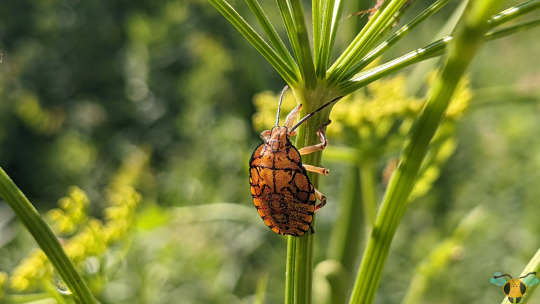
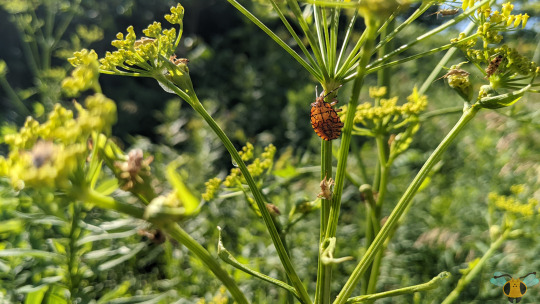




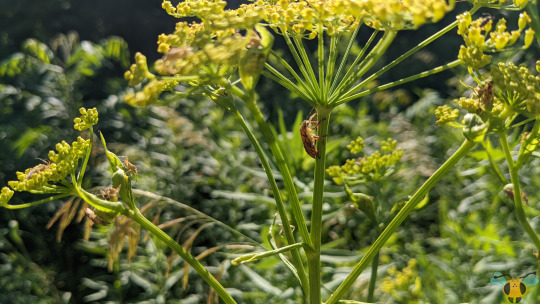



Predatory Stink Bug (nymph) - Apoecilus cynicus
My, my, out in the wilds of Kleinburg we find a wide and quite colorful insect! In an environment coated with tall and healthy greens, this nymph is a big stand out! While the large individual on display is the main focus of this post, the longer that you stare at these pictures, the more you’ll begin to see fellow Stink Bugs (and other miscellaneous Bugs) in the background. Certainly enough stem and flowers to go around for everyone and if my botany is correct, I believe that this Stink Bug is occupying wild parsnip! While the insects here can carefully navigate the plant’s flowers and (seemingly) tolerate the plant’s sap, humans aren’t so lucky. This plant’s sap is toxic, resulting in blisters on contact with the effects drastically amplified when exposed to light. Sometimes holding onto a plant to keep it steady in wind and/or bring it closer to the camera is needed for an insect picture, but this isn’t one of those plants to handle carelessly. I would advise caution when approaching this particular plant for insect observations and photography and to minimize skin contact where possible. With how humans react to the sap, it’s a miracle what these insects have grown to withstand in their environment...or perhaps they’re just very careful and observant to avoid danger.
Plant precautions handled, let’s examine our young orange insect more closely. As it’s a nymph, it lacks developed wings but will gain after its final molt. Though a spectacular shade of orange and decorated with intricate black lines and red dots, these markings will disappear with the final molt, replaced with a faded-brown exterior. It’s always fascinating the differences in exposed colors between nymphs and adult Stinkbugs. Not only that, but while adult Stink Bugs have a shield shape, the nymphs begin life more rounded. They gradually become more shield-like in appearance as they molt, and I dare say this one is fairly close to that pentagonal shape. As a growing Bug, it needs a food source, and while plants are generally the food of choice, this Stink Bug specie prefers feeding on any soft-bodied insects that it can find. Similar to the Spined Solider Bug (a close relative, both are different genera in the subfamily Asopinae - Predatory Stink Bugs), they use their rostrum to pierce and feed. It was only after actually looking at the photos that I noticed how big the rostrum on this nymph actually is! You could be forgiven for thinking the appendage was an extra leg beneath the head! Interestingly, the rostrum is so enlarged that these insects have difficulty keeping it folded under them as they travel. This one had better be careful as piercing the parsnip stem could yield disaster!
Pictures were taken on July 9, 2022 near Kleinburg village with a Google Pixel 4.
#jonny’s insect catalogue#ontario insect#stink bug#apoecilus stink bug#apoecilus cynicus#hemiptera#true bug#heteroptera#insect#july2022#2022#kleinburg#stink bug nymph#entomology#nature#invertebrates
5 notes
·
View notes
Photo

@sonofsimon submitted: Could you ID this nice wasp? I'm in Michigan.
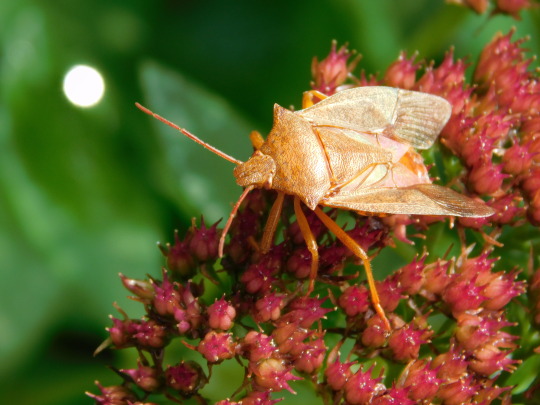
I noticed this cute bug in process of putting it's wings away. I'd never seen that in real life, just in photos and videos. I'm in Michigan if you want to ID. I'm pretty sure it's some kind of stink bug.
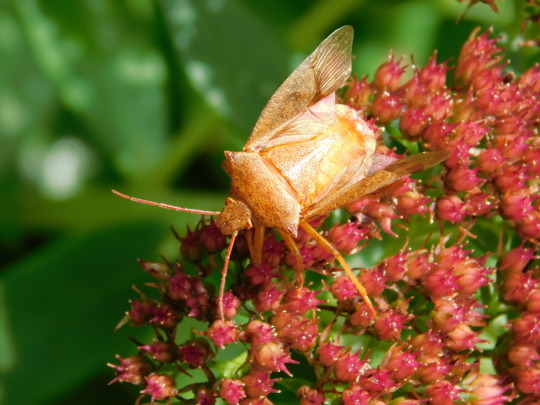
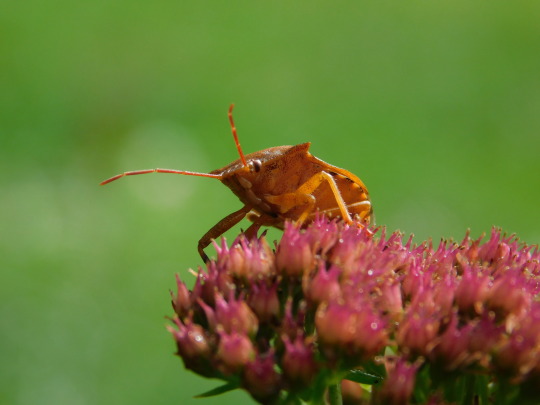
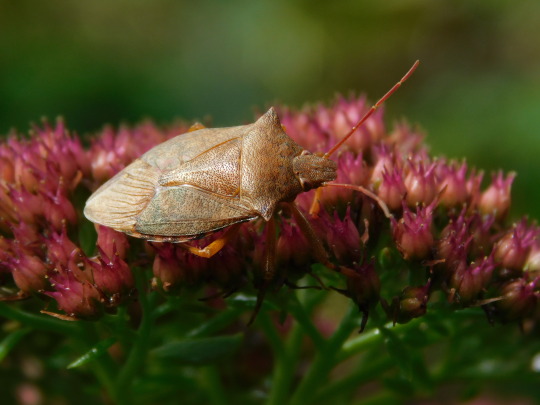
Hope you don’t mind I put your two bug friends into one submission! I’d put my money on a Mexican grass-carrying wasp for the first fellow. Very cute! The second is indeed a stink bug, and what a great series of photos of them putting their wings away! Not super positive on the species, though. Possibly Apoecilus cynicus.
#insects#bugs#submission#wasp#thread waisted wasp#mexican grass carrying wasp#true bugs#stink bug#Apoecilus cynicus
116 notes
·
View notes